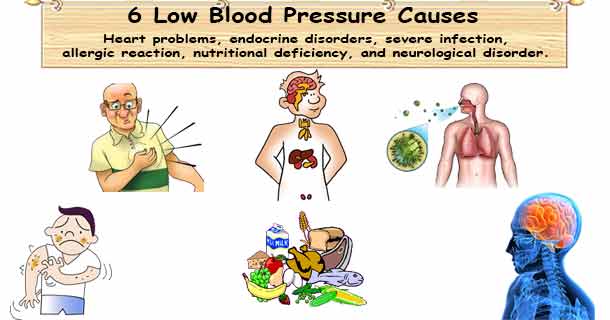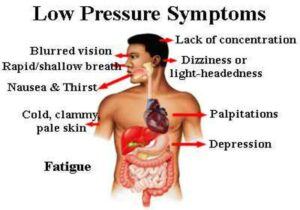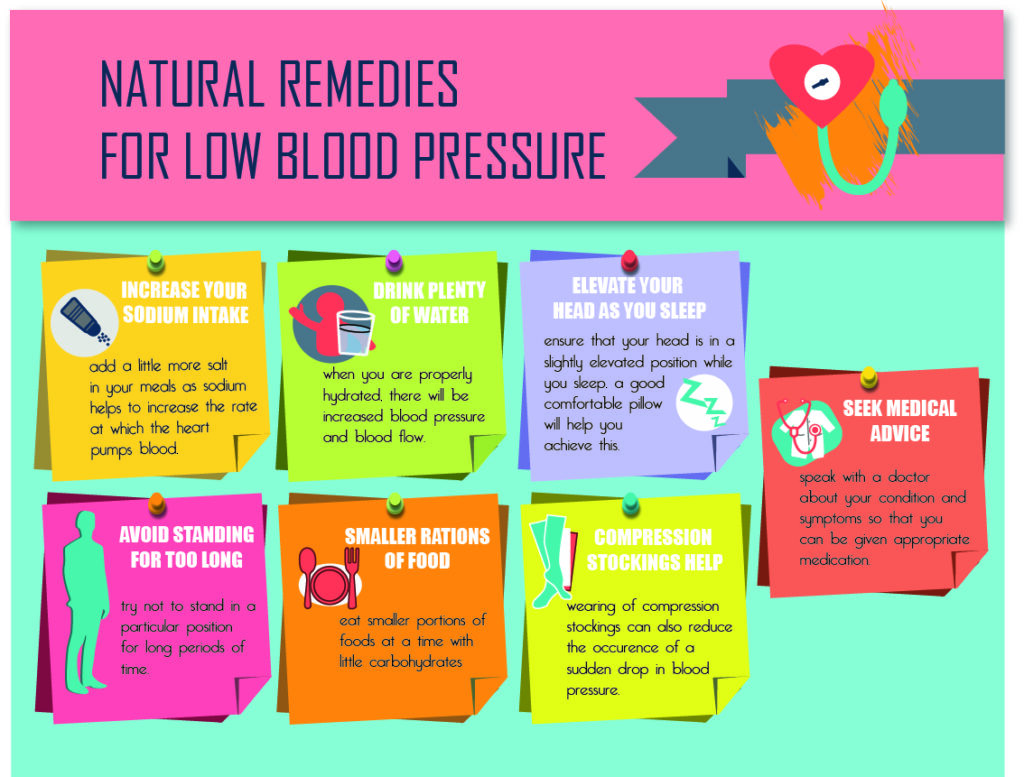We hear a lot about high blood pressure but not so much about low blood pressure. However, it is as essential to be aware of both low blood pressure and high blood pressure. This article will illuminate the facts about low blood pressure.
What is Blood Pressure?
Blood pressure is the power of flowing blood on the walls of blood vessels, mainly arteries. This pressure is primarily a consequence of the heart pumping blood through the circulatory system.
What is Low Blood Pressure?
Low blood pressure (Also known as hypotension) transpires when blood pressure decreases below the normal range. Physicians generally identify low blood pressure as 90/60 mm Hg or below, commonly stated as “90 over 60” typically, physicians only treat hypotension if it is critical enough to cause symptoms.
Low blood pressure may be temporary, or it can be a chronic or long-lasting condition. The main types of hypotension are:
- Postprandial hypotension:
This condition causes individuals to experience lightheadedness or dizziness after ingesting a meal as their blood pressure suddenly declines. - Orthostatic hypotension:
Individuals with Orthostatic hypotension (sometimes called postural hypotension) will feel faint or lightheaded whenever they stand up or change position suddenly. - Neurally mediated hypotension: Individuals with this condition feel faint, dizzy, and nauseous post-exercise or standing for a lengthy time.
- Severe hypotension linked to shock: Shock is the most severe form of hypotension. When an individual is in shock, blood pressure drops to critically low levels, and the brain and organs cannot get sufficient enough blood to perform.
Hypotension is relatively widespread, and various types are more probable to transpire in specific groups of individuals. For example, orthostatic hypotension is usual in pregnant women and older adults. Postprandial hypotension, on the other hand, is common in older individuals.
How is Low Blood Pressure Diagnosed?
After reviewing the symptoms, the doctor will observe blood pressure by placing a blood pressure cuff around the upper arm. The cuff will tighten on the arm, and the monitor will measure your systolic and diastolic pressure.
- Systolic blood pressure, the top number, indicates how much pressure the blood is thrusting against the artery walls during heartbeats.
- Diastolic blood pressure, the bottom number, indicates how much pressure the blood is thrusting against the artery walls while the heart is resting between beats.
A blood pressure reading of 90/60 mm Hg (or lower) is regarded as low blood pressure.
As mentioned earlier, low blood pressure can be a sign of an underlying condition. Therefore, a doctor will try to establish what initially caused the blood pressure to decline. The doctor may also check the heart using an echocardiogram, electrocardiogram, or stress test, depending on medical history and symptoms. The doctor may additionally perform blood tests to check for the following:
- Anemia
- Diabetes
- Hormonal imbalances
- Hypoglycemia (low blood sugar)
- Thyroid problems
- Vitamin deficiencies
What Causes Low Blood Pressure?
Low blood pressure is frequently an indication of an additional medical condition. Low blood sugar has a variety of causes. They include:
- Blood loss or blood infection
- Dehydration
- Extreme emotions such as fear or pain
- Heart disease or other heart problems include fast heart rate (tachycardia) or prolonged heart rate (bradycardia)
- Pregnancy
- Severe changes in body temperature
- Specific medications, such as those for depression, Parkinson’s disease, or erectile dysfunction
Symptoms of Low Blood Pressure
Symptoms of low blood pressure may come on the scene suddenly or gradually become worse over time. They include:
- Blurred vision

- Dizziness, lightheadedness, and fainting
- Fatigue
- Nausea
- Quick, shallow breathing
- Skin that is cold and sweaty
How to Relieve Symptoms of Low Blood Pressure
Depending on the type of low blood pressure diagnosed, an individual may be able to relieve some of the symptoms by the following:
- Consuming a healthy diet with smaller amounts of carbohydrates and smaller meals
- Increasing water intake and steering clear of alcohol
- Rising slowly after sitting or lying down
- Concentrating on breathing a few times before changing position
- Using compression stockings
Who is at Risk for Low Blood Pressure?
Individuals of all ages can be affected with low blood pressure, even though it is more usual in elderly individuals who are frail or bedridden. Pregnant females and elderly adults are more likely to have the orthostatic version of hypotension. Children and young adults are most likely to experience the neurally mediated version of hypotension. However, they usually outgrow it.
Hypotension usually involves individuals that:
- Are taking specific medications that trigger low blood pressure
- Have certain hormonal imbalances or vitamin deficits
- Additionally, have heart problems or liver disease
How is Low Blood Pressure Treated?
The treatments for low blood pressure greatly depend on the cause of the condition. Collaboration with a physician is the best route to take to address the cause of the hypotension. In severe cases of hypotension, a doctor may administer IV fluids to raise the blood pressure.
Depending on a variety of factors, such as age and the type of hypotension, a physician may advise one or more of the following: dietary changes, lifestyle changes, and possibly medications.
For the dietary changes, a physician might advise an individual to:
- Drink less alcohol
- Consume slighter, healthy meals and reduce carbohydrates
- Increase salt consumption slightly as sodium raises blood pressure
- Remain hydrated by consuming more water all through the day.
A patient can take several steps to avoid a sudden drop in blood pressure. A physician may suggest the following lifestyle changes:
- Evade standing for long periods of time.
- Rise up gradually after sitting or lying down.
- Sit up and breathe thoroughly for a few minutes prior to getting out of bed.
- Wear compression stockings.
The doctor may prescribe medications such as:
- Fludrocortisone, which increases blood volume
- Midodrine, which increases blood pressure
Side Effects of Low Blood Pressure Treatment
For the lifestyle and dietary changes that can treat hypotension, there are no side effects.
On the other hand, the medications used to treat hypotension can have a number of side effects, some of which may be serious. For example, Fludrocortisone can make certain infections worse. Therefore, it is essential to discuss this medication with the physician. The most frequent undesirable secondary effects from Fludrocortisone are:
- Dizziness
- Increased risk of infection
- Insomnia (problems sleeping)
- Nausea, bloating, or other stomach problems
The most usual side effects with midodrine are:
- Goosebumps and chills
- Itching
- Numbness or tingling
Complications from Low Blood Pressure
Although it is not typically a severe medical condition, low blood pressure-hypotension can cause injuries due to fainting and falling. Additionally, if low blood pressure-hypotension is left untreated, the heart, brain, and other organs cannot receive sufficient amounts of blood and cannot function correctly. Severe low blood pressure-hypotension can lead to shock, which can be fatal.
Preventing Low Blood Pressure
Hypotension is preventable by making changes to lifestyle and diet, for instance:
- Eating smaller amounts of carbohydrates and choosing small, healthy meals
- Staying hydrated and avoiding alcoholic drinks
- Rising slowly when sitting or lying down
- Engaging a few deep breaths before changing position
- Wearing compression stockings
If an individual has recurring fainting, dizziness, or other symptoms of low blood pressure, they should visit their doctor. Abrupt declines in blood pressure can be dangerous. It is crucial to determine why the blood pressure is dropping and treat the cause.
Monitored and controlled low blood pressure does not generally cause serious or long-term health problems, especially since physicians can treat any underlying condition. Numerous individuals learn to control hypotension with dietary and lifestyle changes.
You are welcome to leave any question, comment, concern, or any experience with low blood pressure you would like to share below.
Good Health!!
I have high blood pressure myself -and I enjoyed your previous article about high blood pressure. But this article is now talking about low blood pressure – and I am curious to know if this can be something to be worried about whilst I am trying to manage my high blood pressure.
Many thanks for all your content -they are indeed informative.
Since you have high blood pressure, there is no need to worry about low blood pressure. Just stay on top of the high blood pressure issue by monitoring it regularly as you make the necessary changes in your diet and exercise. If it should get too low, contact your physician.
I didn’t know that low blood pressure is a bad thing until today. So what is the difference between high blood pressure and low blood pressure and which one is worse? I’m assuming it’s high blood pressure because I haven’t come across someone who complains about having low blood pressure.
Balance is the key to life. Therefore excess in any direction is a problem. As for the difference between the two: High blood pressure places too much pressure on the veins and arteries, whereas low blood pressure doesn’t place enough pressure for blood to circulate properly. However, in general, it is much better to have low blood pressure rather than high blood pressure. It may even prolong life expectancy unless it leads to symptoms such as light headedness or dizziness, fainting, nausea, or blurry vision. High blood pressure is the more common of the two.